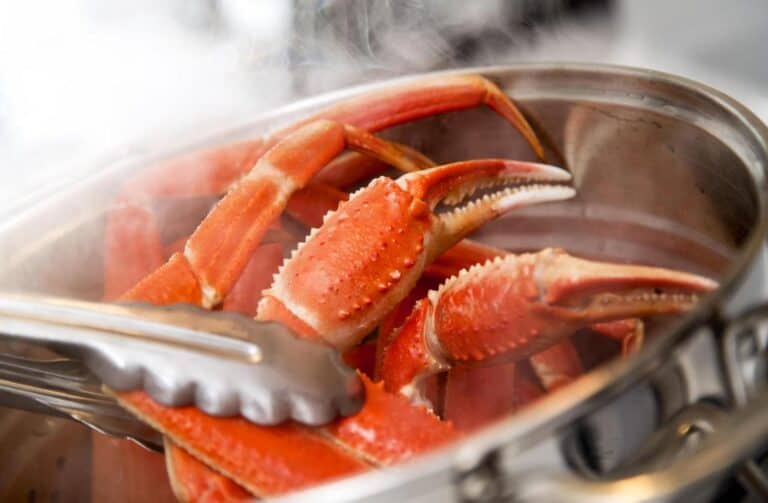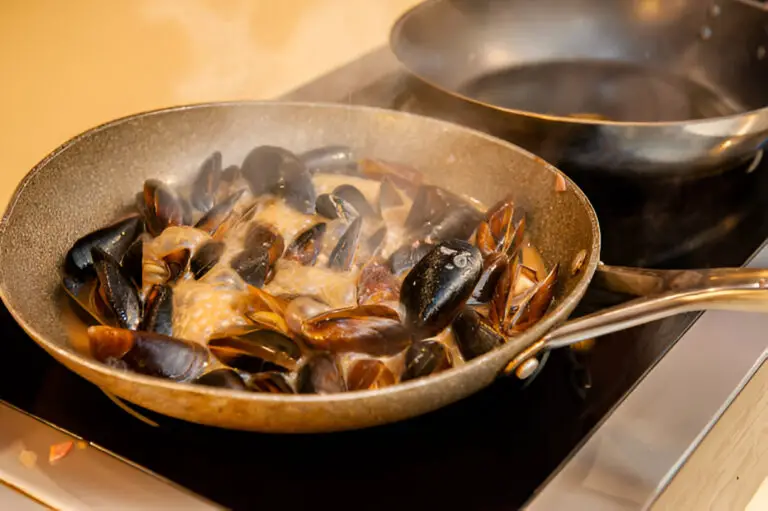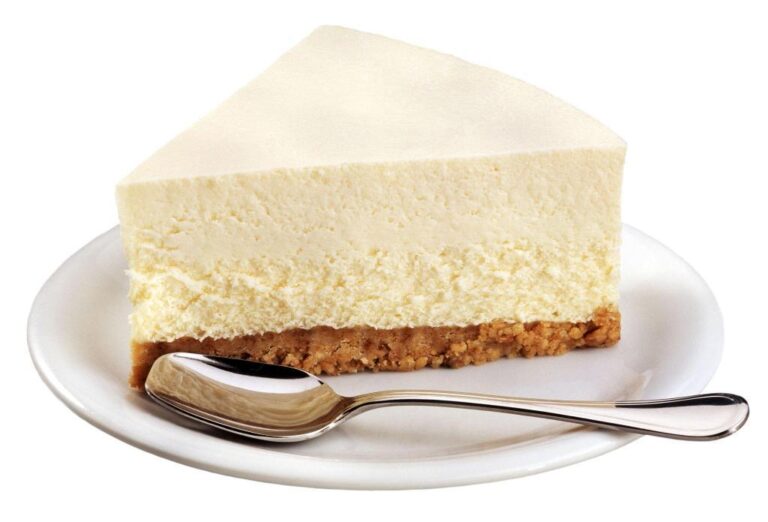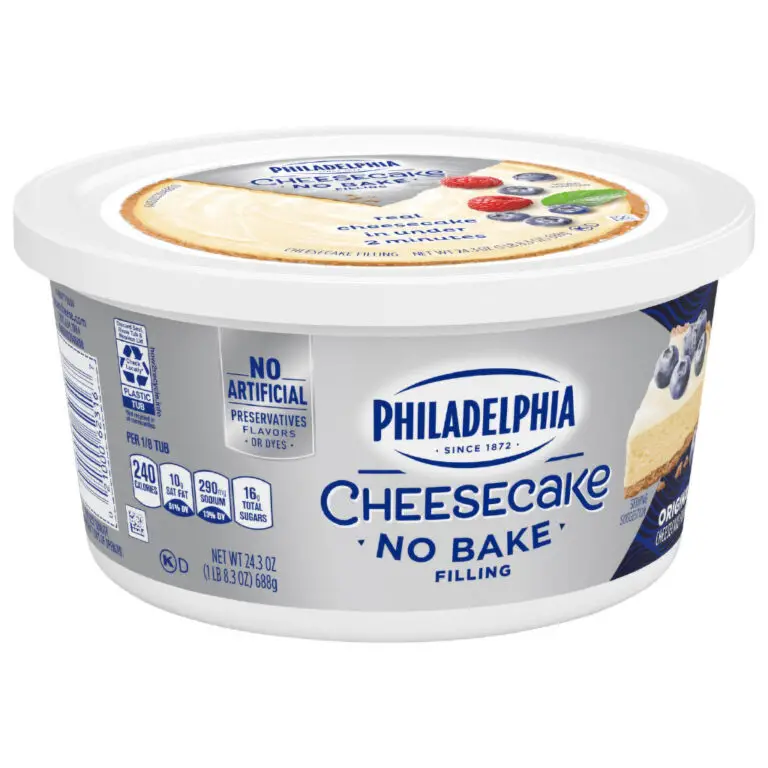How Can You Tell If a Squid Is Undercooked?
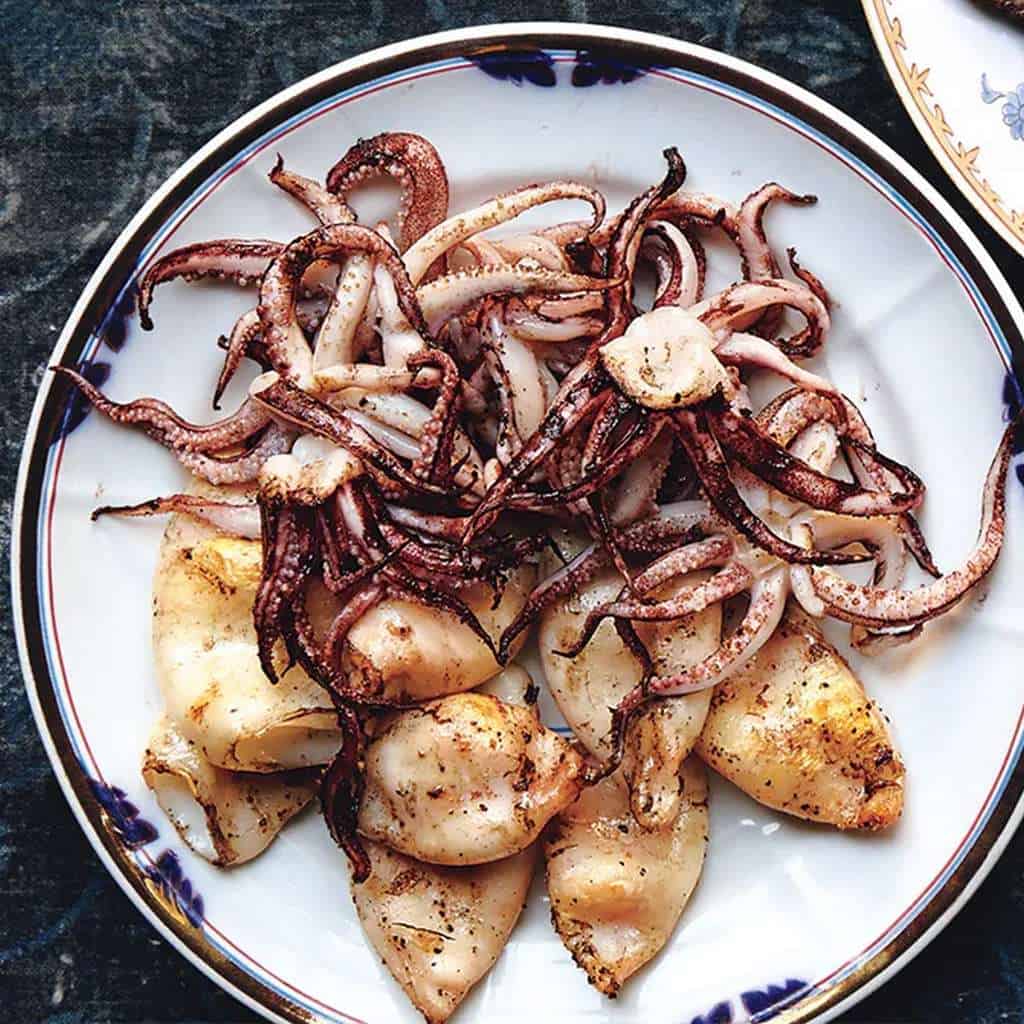
Many people enjoy eating squid, which is a well-known seafood delicacy. Whether you’re grilling, frying, or baking it, there’s nothing quite like the taste of perfectly cooked squid. However, getting the cooking time just right can be a bit tricky, especially if you’re new to handling squid.
Undercooked squid can be unpleasant to eat and even dangerous, as it can contain harmful bacteria that can cause food poisoning. So, how can you tell if a squid is undercooked?
In this article, we’ll explore some tips and tricks to help you determine whether your squid is cooked to perfection or needs a little more time on the stove.
The Risk of Consuming Undercooked Squid
Squid is a delicious and versatile seafood that can be enjoyed in many different dishes, from stir-fries to salads to sushi. However, if squid is not cooked properly, it can pose health risks to those who consume it. Eating squid that hasn’t been cooked enough can make you sick with food poisoning or parasites.
One of the main risks of eating raw squid or consuming undercooked squid is infection with a type of parasite called a nematode. These tiny organisms are commonly found in squid and other seafood, and they can cause gastrointestinal symptoms such as nausea, vomiting, and diarrhea.
In rare cases, nematode infections can lead to more serious complications, such as blockages in the digestive tract or damage to the nervous system.
WARNING
If you eat squid that isn’t cooked enough, you could get sick from bacteria like Vibrio vulnificus. This bacteria lives naturally in warm saltwater and can cause serious infections in people who eat seafood that has been contaminated with it. Symptoms of Vibrio vulnificus infection include fever, chills, nausea, and blistering skin lesions.
In severe cases, the infection can lead to sepsis, which is a life-threatening illness that needs medical help right away.
To minimize your risk of consuming undercooked squid, it’s important to cook it thoroughly before consuming it. When cooking squid, make sure it reaches an internal temperature of at least 145°F (63°C) to kill any parasites or bacteria that may be present.
It’s also important to handle squid properly before and after cooking, as contamination can occur during handling or storage.
How to Properly Cook Squid

Cooking squid is a simple process that can be done in various ways, including grilling, frying, or boiling. Regardless of the method, it is essential to cook squid properly to ensure it is safe and delicious to eat. Here are some proper, easy-to-cook squid.
- The first step to cooking squid is to clean it thoroughly.
- Start by removing the head, tentacles, and insides. The remaining parts are parts of squid that can you eat.
- Rinse the squid under cold running water and use your fingers or a knife to remove the skin and fins.
- Cut the squid into the desired size or shape and pat it dry with a paper towel.
- When grilling squid, preheat the grill to high heat and brush the squid with oil to prevent it from sticking to the grill. Cook for approximately two minutes per side, or until the squid is cooked through but still tender.
- For frying squid, heat the oil in a frying pan over medium heat. Set up a dredging station with the whisked eggs in one shallow bowl and the whisked flour mixture in another. Cover the squid rings in the whisked eggs, then cover with flour. Fry in oil over medium heat until golden and cooked through.
- Boiling squid is another popular method of cooking squid. To do this, bring a pot of water to a boil and add the squid. Cook for approximately two to three minutes, or until the squid is tender. Drain the squid and serve immediately with your favorite dipping sauce or seasoning.
Regardless of the cooking method, be sure not to overcook the squid. Overcooked squid can be rubbery and tough to eat, which can ruin the entire dish. Properly cooked squid is tender, juicy, and bursting with flavor.
How Can You Tell If a Squid Is Undercooked?
There are several indicators that can help you determine if your squid needs more time in the heat.
The first indicator of undercooked squid is its appearance. When squid is cooked, it should turn opaque white and have a firm texture. If the squid is still translucent and jelly-like, it is likely undercooked. To check the texture, gently press the squid with a fork or tongs. If it feels mushy, it is not yet done.
Another indicator of undercooked or raw squid is its taste. Undercooked squid has a chewy and rubbery texture that is unpleasant to eat. When properly cooked, squid should have a tender, slightly chewy texture that is easy to bite through. If your squid tastes tough or rubbery, it is likely undercooked or still raw squid and not safe to eat.
You can also check the internal temperature of the squid to ensure that it is cooked through. A properly cooked squid should reach an internal temperature of 145°F (63°C). Use a meat thermometer to check the temperature of the thickest part of the squid to ensure that it is fully cooked.
Common Mistakes to Avoid When Cooking Squid
Cooking squid can be a bit tricky, especially if you’re not familiar with handling this unique seafood. However, with a little bit of practice and the right techniques, you can prepare delicious and perfectly cooked squid every time.
To help you avoid common mistakes when cooking squid, here are a few tips to keep in mind:
- One of the most common mistakes when cooking squid is overcooking or undercooking it. Squid can become tough and rubbery if it’s cooked for too long, but it can also be unsafe to eat if it’s not cooked long enough. To avoid this, it’s important to pay close attention to the cooking time and temperature and to test the squid for doneness before serving it.
- Another mistake to avoid when cooking squid is not cleaning it properly before cooking. Squid has a thin, transparent membrane called the “quill” that runs down the center of the body. If this membrane is not removed before cooking, it can become tough and chewy, making the squid less enjoyable to eat. To remove the quill, simply grasp it firmly and pull it out of the body.
- A third mistake to avoid when cooking squid is overcrowding the pan. If too much squid is added to the pan at once, it can lower the temperature of the oil and cause the squid to steam rather than fry. This can result in squid that is soggy and lacking in flavor. To avoid overcrowding the pan, it’s best to cook the squid in small batches, making sure to leave enough space between the pieces.
- Finally, a common mistake when cooking squid is not seasoning it properly. Squid can be quite bland on its own, so it’s important to season it well with salt, pepper, and any other herbs or spices that you prefer. You can also marinate the squid before cooking it to add more flavor and tenderize the meat.
Do You Boil Squid Before Frying?
Boiling squid before frying is a common misconception that many people have. However, boiling squid before frying can actually ruin the texture of the squid and make it tough and chewy. Instead, it’s best to coat the squid in a flour mixture and then fry it in oil until golden and cooked through.
To prepare the squid for frying, you will need to clean it properly. First, remove the head, tentacles, and innards of the squid. Cut the mantle, or body, into rings, and the tentacles into small pieces. Then, rinse the squid under cold running water and pat it dry with paper towels.
To make the flour mixture, whisk together flour, salt, pepper, and any other seasonings you like. In a separate shallow bowl, whisk together the eggs until they are light and frothy. Dip the squid rings and tentacles in the whisked eggs, making sure they are fully coated. Then, transfer them to the flour mixture and coat them thoroughly.
Heat oil in a frying pan over medium heat until it’s hot but not smoking. Fry the coated squid rings and tentacles in batches, making sure not to overcrowd the pan. Cook them until they turn golden brown and the squid is cooked through. This should take about 2-3 minutes per batch.
Once the squid is cooked, transfer it to a plate lined with paper towels to absorb any excess oil. Serve the fried squid with a dipping sauce of your choice, such as aioli or marinara sauce. This makes a great appetizer or main course, and it’s perfect for entertaining guests or enjoying a meal with your family.
5 Tips for Cooking Squid to Perfection
Cooking squid can be a bit tricky, but with a few tips and tricks, you can achieve perfectly cooked and tender squid every time. Here are five tips to help you cook squid to perfection:
- Clean the squid properly: Cleaning the squid is the first step in cooking it properly. Remove the head, tentacles, and innards, then peel off the skin and wings. Rinse the squid under cold water and pat it dry with a paper towel.
- Cook quickly: Squid should be cooked quickly over high heat to prevent it from becoming rubbery. You can sauté, grill, fry, or stir-fry squid. It’s important to avoid overcooking the squid.
- Marinate: Marinating squid can help tenderize it and add flavor. A simple marinade of olive oil, lemon juice, garlic, and herbs can do wonders for the taste and texture of squid.
- Do not overcrowd the pan: It’s important to not overcrowd the pan when cooking squid, as it can cause the temperature to drop, resulting in the squid becoming rubbery. Cook the squid in batches, if necessary.
- Timing is key: Squid cooks very quickly, and it’s important to keep an eye on it to avoid overcooking. Depending on the method you choose, squid should be cooked for no more than a couple of minutes on each side.
By following these five tips, you can cook squid to perfection with tender and flavorful results.

